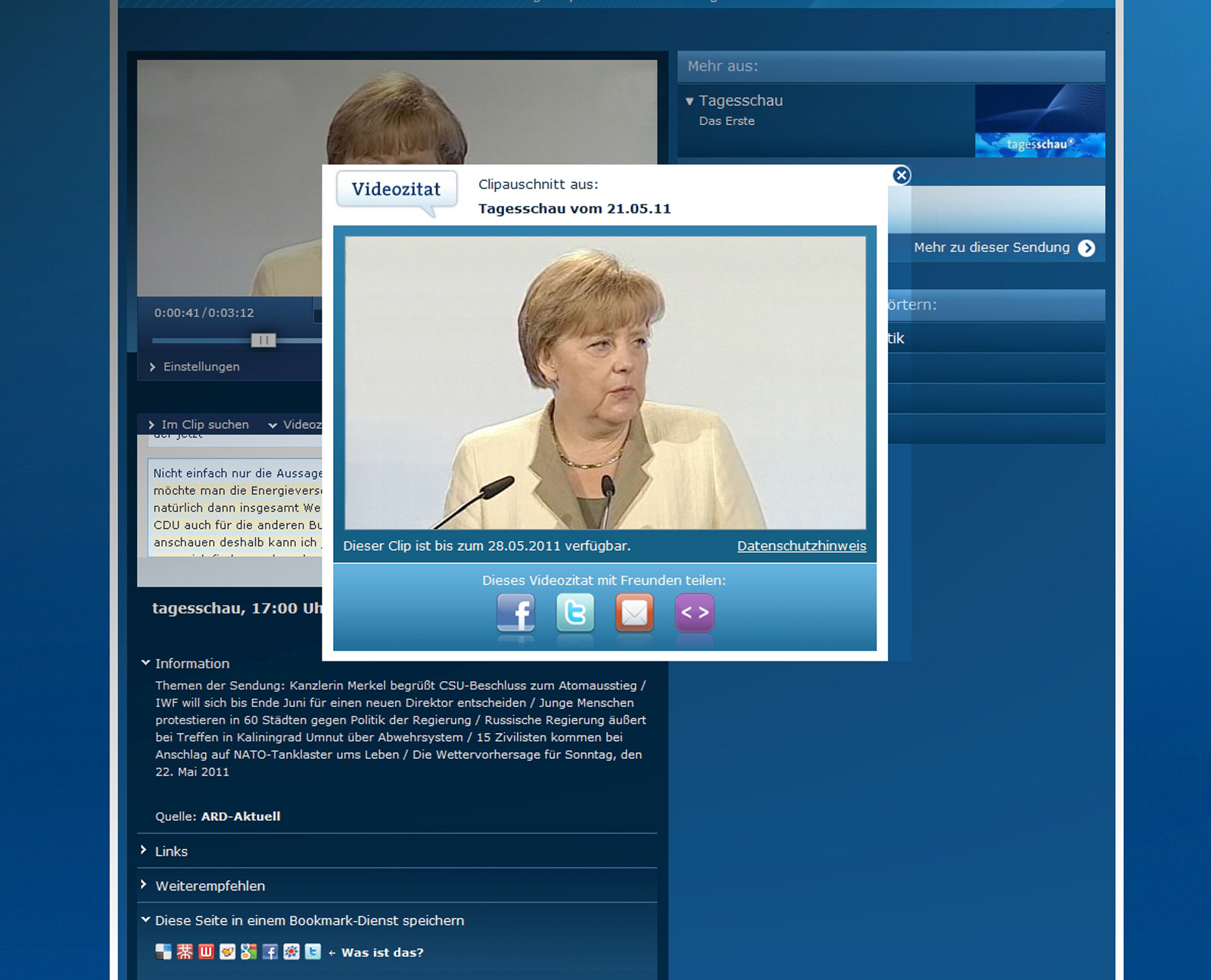ARD Mediathek enhanced with new search functions
This May new and improved search capabilities were introduced on the ARD Mediathek portal. Visitors to the website can now target their searches for TV and radio content more specifically. Information can also be extracted directly from video footage. All thanks to software from Fraunhofer.
Since May 2008, German public service broadcaster ARD has been pooling the TV and radio content of its nine regional broadcasting organizations and making it available online through a single media library called ARD Mediathek. Now, led by its Southwest German unit SWR and working with the Fraunhofer Institute for Intelligent Analysis and Information Systems IAIS in Sankt Augustin, the broadcaster’s website ARD.de has conducted a project to improve its search functions so that users can reach the programs they want to catch up on more quickly. The upgraded site was relaunched in May.
Previously, users could only find programs and podcasts by way of their title, the transmission date and brief descriptions. Now, with the audio mining solution developed by Fraunhofer IAIS, program soundtracks are also analyzed and automatically enriched with metadata. As a result, visitors to the site can target their searches more specifically. “The regional broadcasters often put programs in the media library with inadequate metadata, but our technology enables people to still find the content they want. Our audio mining solution uses a voice-recognition facility which searches through the audiovisual database and converts the soundtrack into written text. The search engine for ARD Mediathek then analyzes how often the word is used. This increases the hit rate. The way the search results are sorted according to relevance has also been optimized,” says Angelika Pauer from Fraunhofer IAIS. The IAIS team has developed essential components of the audio mining technology within the THESEUS research program, funded by the German Federal Ministry for Economics and Technology (BMWi).
What‘s more, visitors to ARD Mediathek can use the new ‘videoquote’ function to share extracts from audio and video content with other users on an external website. This is how it works: The user sees a piece of footage that they would like to quote, perhaps a statement by a politician. At the click of a button the section of video being watched is displayed in text form at the bottom of the screen. Any part of the text can then be highlighted and posted as a link e.g. to Twitter or Facebook or sent as an email. By clicking on the link the recipient directly accesses the desired passage in the video clip. The ‘videoquote’ function has been made available initially for genres such as politics, talk shows, news, reportage and documentaries, but there are also plans to use it for entertainment programs. “Using ‘videoquote’ visitors can recommend interesting video content on Twitter, Facebook or their blog. This will make the ARD’s programs better known on the internet,” Pauer adds. The fact that users can now jump directly to passages they want to quote will only intensify this effect. The new ‘search in video’ function makes it easy to find keywords in moving footage. A click on this button displays a search field and a time bar which marks the places where the search term appears in the video. Thus it is possible to find specific content in long videosequences.
The ARD.de editorial team and the research scientists at Fraunhofer IAIS had already worked together successfully in 2009, when the audio mining technology was used for launching the ‘Web Duel’ feature. Visitors to media library were able to select an election topic and two leading politicians and then see what they had said on the subject on programs broadcast by ARD. “Computers and television are moving closer and closer together. People want to use the search functions on the internet for radio and TV content too. This trend will strengthen with the increasing spread of internet-capable TVs,” says Pauer, concluding: “Our software system makes it possible to search audio and video content. Now we can take the techniques we are familiar with from the web and apply them to moving images.”
